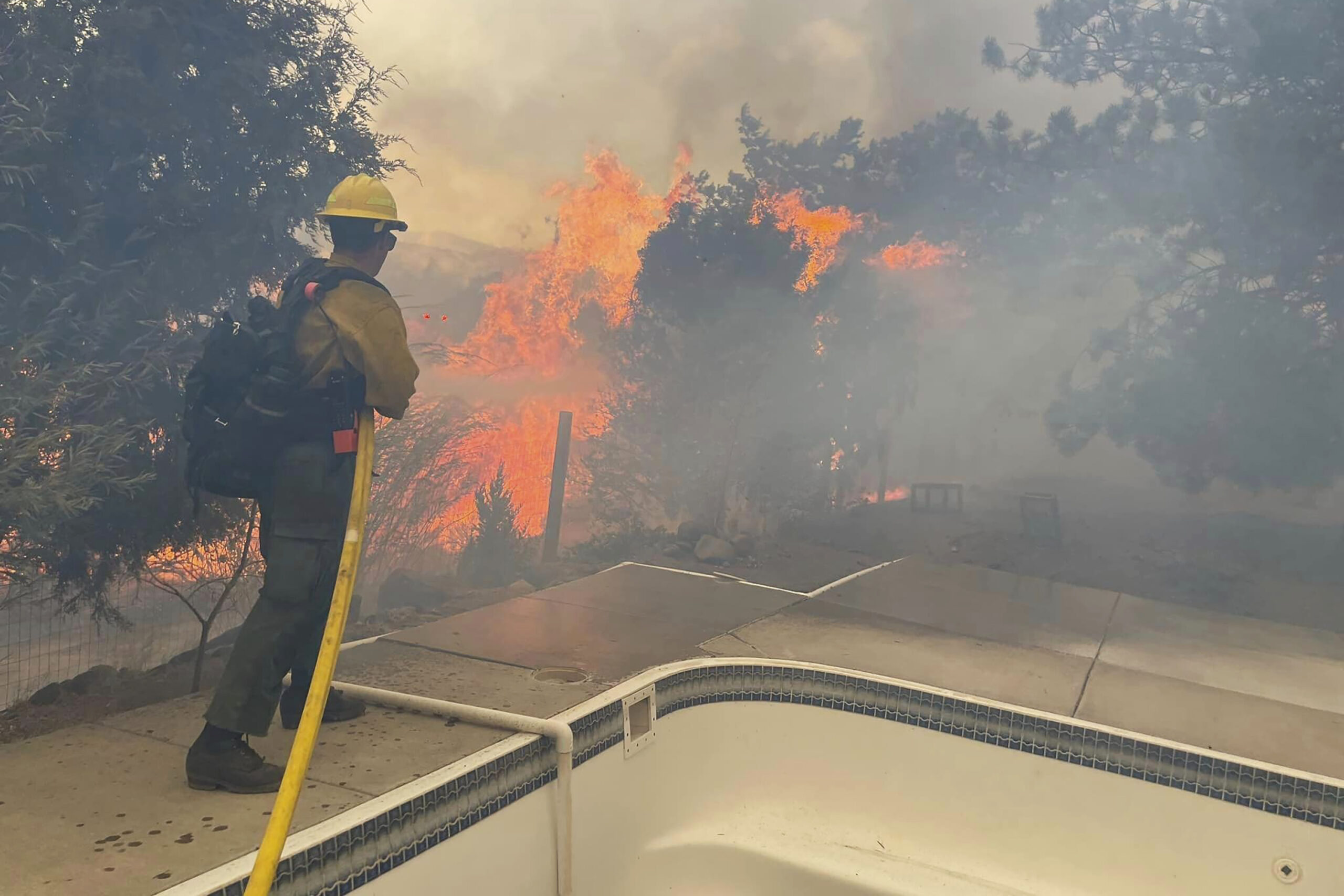NV Energy’s ratepayer-funded wildfire insurance policy rejected; utility gets 2nd chance

NV Energy has sufficiently proved to state energy regulators that it needs additional wildfire insurance, but the utility has so far failed to convince them that asking its customers to shell out hundreds of millions of dollars is the best way to increase its coverage.
In January, the utility asked the Public Utilities Commission (PUC) to allow it to establish a $500 million wildfire self-insurance policy to protect its customers from risk associated with a catastrophic fire caused or exacerbated by the utility’s equipment.
It was the first time the state’s largest electric utility had made such a request, but it’s a move many other Western electric utilities have taken amid soaring insurance premiums and successful lawsuits filed against utility companies for their role in sparking some of the blazes.
In an order approved by the commission on Tuesday, state energy regulators pointed out the utility never provided a written draft of its new, proposed policy, leaving energy regulators and their staff unable to compare it to existing alternatives. The commission also questions whether a self-insurance policy is the best approach after NV Energy also failed to prove it was unable to obtain additional commercial insurance and that existing commercial insurance offerings are cost prohibitive.
As initially described, the self-insurance policy would see NV Energy collecting funds from customers to cover potential losses, instead of purchasing traditional insurance from a third party insurer. The policy would cover any damages utility customers sustained in a fire if the blaze was found to be started by NV Energy’s equipment — it would not cover damages to the utility’s equipment or facilities.
After the vote, an NV Energy spokesperson said the policy was a “proactive step” for the utility to prepare for the risk of a catastrophic wildfire, and it remains “committed to continuing these meaningful conversations and collaborative efforts to develop solutions that protect our customers and the communities we serve.”
As proposed, the average Northern Nevada residential customer would see their bill increase by about $2.40 per month, while an average Southern Nevada residential customer would see an increase of about $0.50 per month (accounting for the higher risk of wildfire in Northern Nevada). By having customers pay into the fund over the next decade, the utility’s total wildfire insurance would exceed $1 billion.
The utility had originally asked state energy regulators to allow it to start collecting money from ratepayers in October.
Instead, the utility now has until mid-October to provide state energy regulators with the details and information it neglected to provide the first time, including existing insurance information, a draft of the proposed policy and documentation showing its efforts to obtain wildfire liability insurance on the open market.
‘Misplaced’ justification
Between 2016 and 2020, utility infrastructure is estimated to have caused nearly one-fifth of all wildfires. Major utilities found responsible for some of them, such as PG&E, California’s largest electricity provider, were forced to file for bankruptcy after being unable to pay for damages caused by the fires, an outcome NV Energy is looking to avoid.
Since 1980, wildfires have burned more than 15.2 million acres in Nevada.
NV Energy’s premiums have increased dramatically over the last several years, with costs rising substantially in 2020, the year after PG&E declared bankruptcy.
In 2018, NV Energy paid approximately $1.35 million for insurance and received approximately $485 million in coverage, meaning each dollar paid resulted in about $360 dollars in coverage.
For coverage this year, the company paid $54.34 million, receiving about $405 million in coverage — despite paying roughly 50 times more, each dollar results in less than $7.50 worth of coverage.
NV Energy is making efforts to reduce the threat of wildfire in Nevada, including hardening grid infrastructure in fire-prone areas and proactively turning off power when wildfire conditions are ripe. But the reality of a growing threat from wildfire remains.
Relying on information from a consultant who studied the possibility of catastrophic wildfires occurring in Nevada over the next two decades, the utility estimates that in the next decade, there is an 18 percent chance of a fire resulting in damages of more than $1 billion occurring in the state. Over the next 20 years, those odds increase to 33 percent, according to the utility.
The Bureau of Consumer Protection (BCP), which weighed in on NV Energy’s request, countered that the odds cited by the utility of a major blaze starting in Nevada are not necessarily for fires started by the utility’s equipment. When assuming a large-scale fire is started by the utility’s equipment, the BCP added, those odds decrease to a less than 5 percent chance over the next decade and a 9 percent chance over the next 20 years.
In its requests to state energy regulators, the utility stopped short of comparing itself to PG&E but did liken its wildfire risk profile to that of other Western utilities including San Diego Gas and Electric, a utility that shares a similar number of retail customers, distribution mileage and number of customers living in wildfire-prone areas.
San Diego Gas and Electric has carried at least $1 billion in liability insurance for almost 20 years after settling approximately $2.4 billion of $4 billion in damage claims related to three 2007 fires in its service territory.
The BCP said NV Energy’s “heavy reliance” on California and other Western utilities as justification was “misplaced” and that if a self-insurance fund is approved, it should start much lower, at $100 million.
According to the BCP, Nevada is the only state out of seven Western states where Berkshire Hathaway, NV Energy’s parent company, is seeking a self-insurance policy at one of its companies. (A prior request for a self-insurance policy in Utah was withdrawn.)
Intervenors involved in the request pointed out that having customers fund the insurance shifts the liability to ratepayers rather than shareholders, while PUC staff pointed out that even a $100 million insurance plan would pale in comparison to the several-billion-dollar exposure that a catastrophic wildfire would likely cause.
Editor’s note: This story was updated at 5 p.m. on July 29, 2025 to include a statement from NV Energy and reflect a vote by the commission.
